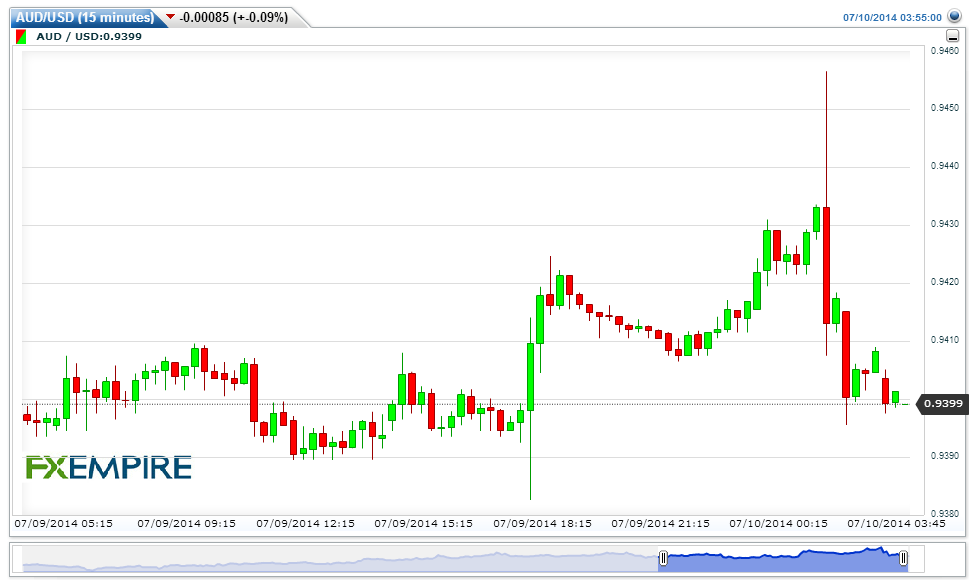Asian markets are trading on a mixed note today as Chinese exports missed the estimates which exerted downside pressure on the markets. While on the other hand, fall in oil prices due to rising supplies acted as a positive factor for the markets. China’s Trade Balance at a surplus of 31.6 billion Yuan in June as against an earlier surplus of 35.9 billion Yuan in May.
Wall Street finished higher yesterday, rebounding from a sharp two-day selloff, after minutes from the last Federal Reserve meeting showed policymakers have started to detail how the central bank will end its easy monetary policy. The Fed’s failure to provide a clear signal on when rates would rise drove the US dollar lower. The dollar should have reacted positively to the prospect of quantitative easing ending in the beginning of the fourth quarter and it did spike higher initially but 15 minutes after the Fed minutes were released, the dollar reversed course and gave up its gains.
Markets this morning have been very active after the release of a slew of Chinese data including trade numbers along with a mixed jobs report in Australia. The economy shed almost 4000 full-time jobs between May and June while the number of unemployed Australians increased more than 20,000 to 742,000, the Australian Bureau of Statistics said today. The Australian dollar dropped below 0.9400 shortly after the numbers were released. The total level of employment in the Australian economy rose 15,900 to 11.58 million in June thanks to a surge in the number of part-time jobs, which make up around 30 per cent of the total. In better news, the participation rate — the number of people of working age in or seeking work — rose to 64.7 per cent from the 8 year low of 64.6 per cent a month earlier. Economists had expected a rise to only 5.9 per cent, heartened by the recent stabilization of the unemployment rate since March at 5.8 per cent.

China released a batch of trade data this morning that missed expectations, but numbers were still an improvement which helped to temper losses in markets. The country’s exports rose 7.2 percent from the year ago period, lower than the 10.6 percent rise predicted by a Reuter’s poll and after gaining 7 percent in May. Imports climbed an annual 5.5 percent, versus Reuters’ forecast for a 5.8 percent rise but reversing a 1.6 percent contraction in May. That brings trade balance to a surplus of 31.6 billion, compared with $35.92 billion logged in May.
Asian markets were little changed following the data, but the Australian dollar fell back into negative territory after hitting a session high of 0.9453 earlier in the day. The figures follow better than expected data from China in recent weeks, from manufacturing to industrial output and retail sales, as the targeted stimulus measures from Beijing supported the economy. The kiwi eased in sympathy to its Australian cousin after the release of Chinese data.
The bottom line is the economy is strong enough to be generating positive jobs growth, but it does underline the RBA’s point of view that it’s going to be a pretty slow grind before the unemployment rate is back on a downtrend again.
